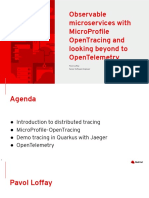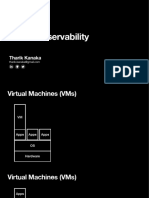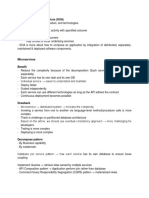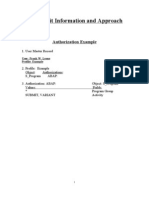0% found this document useful (0 votes)
11 views12 pagesMicroservices Observability in Java
This document provides a guide on microservices observability using tools like ELK Stack, Splunk, and Prometheus with Grafana. It explains the concept of observability, its importance in identifying issues within microservices, and offers examples of how to implement these tools for monitoring logs, metrics, and traces. Best practices for observability and references for further reading are also included.
Uploaded by
train 123Copyright
© © All Rights Reserved
We take content rights seriously. If you suspect this is your content, claim it here.
Available Formats
Download as PDF, TXT or read online on Scribd
0% found this document useful (0 votes)
11 views12 pagesMicroservices Observability in Java
This document provides a guide on microservices observability using tools like ELK Stack, Splunk, and Prometheus with Grafana. It explains the concept of observability, its importance in identifying issues within microservices, and offers examples of how to implement these tools for monitoring logs, metrics, and traces. Best practices for observability and references for further reading are also included.
Uploaded by
train 123Copyright
© © All Rights Reserved
We take content rights seriously. If you suspect this is your content, claim it here.
Available Formats
Download as PDF, TXT or read online on Scribd
/ 12





















































































